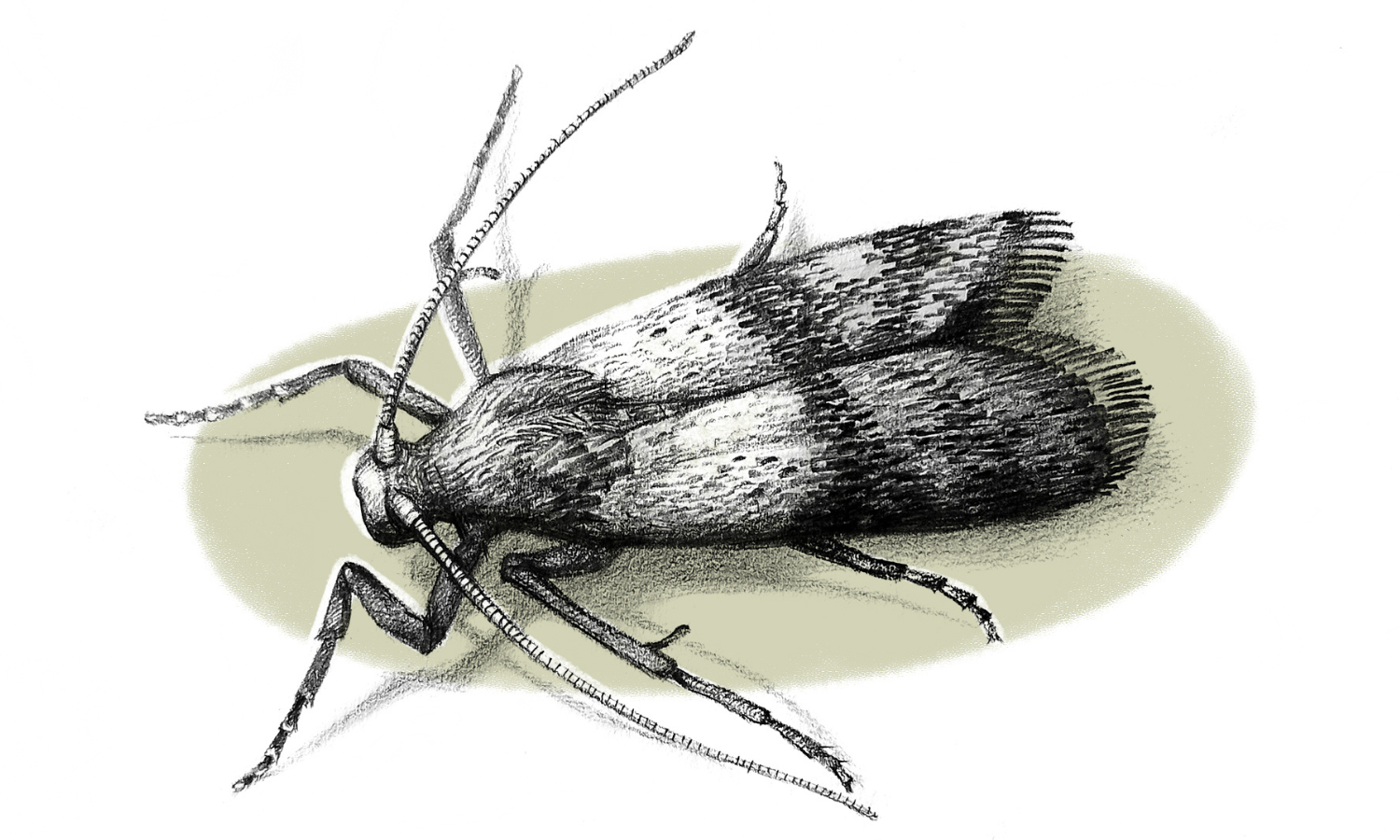When you see a moth, you may not know which one you are looking at; a pantry moth or a clothes moth. And when you do, you begin to worry about your precious items. But do these moths travel to different areas of your home? Can pantry moths eat clothing? Can clothing moths infest your kitchen pantry? Let’s look and answer these questions for you.
What are pantry moths?
There are two common types of household moth to be concerned about. These two types each have areas of your home that they thrive in. We will look at each of these areas to give you a better idea of their behavior.
Pantry months v. clothes moths

Clothes moths come in two varieties—webbing moths and casemaking moths. The adult itself does not eat; they lay eggs near a food source. It is the larvae that eat and does the damage. One key difference is in how they move around and eat. Webbing Moths spin silk tubes, while Casemaking Moths enclose themselves in a tubular casing.
As for pantry moths, also known as Indian meal moths, are the most common moth. Pantry moths lay their eggs near a food source. Just like clothes moths, adults do not eat. When the eggs are hatched, the larvae are the ones who ruin the items they consume.
With these two types of moths living in separate areas of a home, it leaves one to wonder if they ever make their way into each other’s territory.
What do pantry moths eat?
Pantry moths are in search of dried goods. Mostly rice, grains, cereals, pasta, as well as flour and spices. But do pantry moths eat your clothes? The simple answer is, probably not. Indian meal moths do fly farther from their primary source of food in search of another feeding ground, but your closet will not be one of them – unless you keep a stash of snacks hidden in your coat pocket.
On the reverse side, clothes moths do not travel far at all from their source. They are repelled by light, unlike the pantry moth which is attracted to it. So, it is even more unlikely that you would find either a webbing or a casemaking clothes moth in your kitchen, again, unless you store fabric in your cabinets.
So, do pantry moths eat wool clothing? No. Nor will a clothes moth dig into your box of cereal.
How do I get rid of pantry moths?
In either case, if you have an infestation of moths, then you have some work to do in order to rid your home of moths.
First, you need to identify where the infestation is. It is best to assume that you have one at the first sight of the fluttering creature. Check the backs of cabinets and pantries – anywhere you store dried foods. Remember, adult moths do not eat, so you will be looking for signs of eggs and larvae. Eggs can be extremely small and larvae just a bit larger. Be sure to check all the cracks, crevices or joints inside your cabinets or pantry.
When you find their source, then it is always best to toss the item. There are methods of saving the food item. Freezing or heating to high temperatures for a specific amount of time can be used, but why risk illness.
Once you have gotten rid of all the contaminated food, clean the area out thoroughly. Once a larva is done feeding, it will find an undisturbed area to spin its casing and go into its pupae stage until it hatches as an adult. These will be away from food items, generally, in corners and areas that are hidden from sight.
Finally, find a good method of prevention like Dr. Killigan’s Premium Pantry Moth Traps. These traps attract the adult moth with a pheromone and capture through a sticky pad inside the trap, keeping them from being able to lay their eggs and spreading the infestation.
The final word

Pantry Moths will eat pretty much anything in your pantry. Will they eat through the bagging and boxing of your stored foods? Yes! They can chew through several materials to get to their food source. Do pantry moths eat sugar? Yep, your favorite cereal or snack is not off-limits. So, it is best to find them early and to begin the process of ridding your home of moths. The good thing is that you can use methods like moth traps to capture the existing adult moths as you are going through the process of cleaning.
Dr. Killigan’s offers traps for both pantry moths as well as clothing moths: Dr. Killigan’s Premium Pantry Moth Traps and Dr. Killigan’s Premium Clothing Moth Traps.
Both have three benefits:
- In keeping with the Dr. Killigan's creed of Killing Them Softly®, all our products are 100% safe and toxin-free and we never use harsh chemicals in any of our products.
- No wafers! The pheromone is mixed into the glue for easyOne, they are beautiful to look at. They have a stylish design that will keep your home ‘classy.’ Your visitors will not even know they are looking at a moth trap.
- These traps are meant to be displayed, not hidden. The stylish design keeps your home classy and visitors won't even know they're looking at a moth trap.
Finally, Dr. Killigan’s offers a 100% satisfaction guarantee. If you are not happy with the results for any reason, contact us, and we won't hesitate to make things right!





















